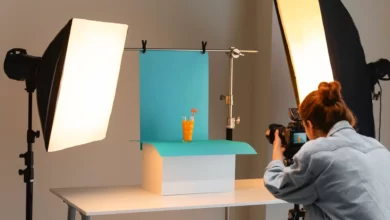THE 3 ALTERNATIVES TO THE PLASTIC COTTON BUDS

Single-use cotton buds are a real scourge for our environment. Pollution of the seas, oceans, beaches, or even endangering biodiversity, is not recyclable and even less biodegradable. So much so that it is in the top 10 of the most found waste on beaches and in the oceans around the world, with no less than 1.2 million tonnes of waste per year.
Fortunately, there are more and more measures aimed at prohibiting it. And above all, there are already ecological and economical alternatives such as the reusable cotton bud or the oculi. In this article, we are going to compare these different alternatives together, 3 in number. But first, a little anatomical reminder.
Is earwax public enemy number 1?
Everyone knows earwax. But yes, it is this yellowish substance secreted by our ears. On the other hand, what fewer people know is that this substance is very important for our ears.
It helps clean and lubricate the ear, protecting against bacteria and fungus. Be careful though, too much earwax can lead to hearing loss, just as cleaning your ears too often can cause plugs to form.
In short, you have to find the middle ground. But then, which alternative to the plastic cotton bud to choose?
The Last but reusable cotton buds
The Last but reusable cotton buds are the essential Zero Waste accessory for a sustainable bathroom. Designed to be used over 1000 times, it is practical and effective. It is used as a classic cotton bud, except that you just have to rinse it after each use.
“As (if not more) effective than a disposable cotton bud, and very easy to clean. Approved!” – Gaelle R.
For those who cannot do without the disposable cotton bud, it is the ideal alternative. It greatly reduces our environmental impact by leaving aside the disposable cotton bud. Be careful however, it is not recommended for the ears of babies and young children.
Bamboo or bioplastic cotton buds
The Lamazuna oculi have made a name for themselves in our bathrooms. It takes its concept from Japan, where it has been used for a very long time. We are no longer talking about natural bamboo cotton buds here, but rather an ear pick. Easy to use, it prevents the formation of plugs in your ears. Coming in the form of a curved bamboo or bioplastic rod, it is very economical since it is reusable for life. Finally, the oculi are ecological: reducing our environmental footprint almost to nothing, it avoids any use of disposable cotton buds.
“I’m very satisfied with it. Say goodbye to disposable cotton buds!” – Elodie
However, its use is not the most comfortable. It is recommended to use it 1 to 2 times a week, removing the wax visible at the entrance to the ear. Above all, you should not go any further. In terms of sensations, it is clear that it is less pleasant to use than a classic cotton bud. Finally, it is better not to use it with babies and children.
Bamboo or bioplastic oriculi
The Lamazuna oculi has made a name for itself in our bathrooms. It takes its concept from Japan, where it has been used for a very long time. We are no longer talking about a cotton bud here, but rather an ear pick. Easy to use, it prevents the formation of plugs in your ears. Coming in the form of a curved bamboo or bioplastic rod, it is very economical since it is reusable for life. Finally, the oculi are ecological: reducing our environmental footprint almost to nothing, it avoids any use of disposable cotton buds.
“I’m very satisfied with it. Say goodbye to disposable cotton buds!” – Elodie
Nevertheless, making use of it is not precisely the most pleasurable activity one might undertake. In order to eliminate any wax that may be visible at the entry of the ear canal, it is recommended to use it once or twice every week. After reading this, you shouldn’t proceed any farther, but especially not at this point. It is evident that utilizing this product results in less enjoyable sensations as opposed to using a conventional cotton bud given the similarities between the two. Last but not least, it is strongly recommended that you refrain from using it on young children as well as babies.




